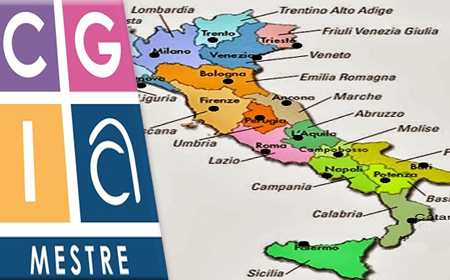The small municipalities are the driving force of the Italian productive economy (the agriculture, financial intermediation, insurance and public administration sectors are not included in this study). In fact, 20 percent of both Italian companies and total employees are located in administrations with fewer than 41 inhabitants, which in this case does not include those employed in the public sector. Also in this class 39 per cent of the national added value is “produced”. If we raise the threshold, in municipalities under 100 inhabitants, the GDP produced is 66 per cent of the total, 69 per cent of employees are employed in private companies and the businesses located are even 71 per cent. Except in Lazio and Liguria, most of the wealth in the country is "generated" in this class of municipalities. These are the most significant numbers that emerge from the elaboration drawn up by the CGIA Studies Office, on behalf of ASMEL, the Association for Subsidiarity and the Modernization of Local Authorities.
In other words, factories, offices, shops and shops are concentrated in the municipalities with a smaller population size. Furthermore, together with the medium-sized municipal realities, they are the main economic / institutional subjects to which politics, also for the purposes of "grounding" the PNRR, should look more carefully.
"Instead - says Francesco Pinto, general secretary of ASMEL - the PNRR method favors the large municipal apparatuses and allows small and medium-sized municipalities to hope in the lottery for access to finance".
Unlike large metropolitan areas, in fact, small and medium-sized municipalities continue to have few resources and many difficulties in accessing the many public notices intended for them and in managing funds.
Furthermore, the strong concentration of production activities in minor territorial realities requires their Mayors important responses on issues such as environmental protection, road safety, mobility, the adequacy of road infrastructures and the need for efficient local public transport. . These are critical issues that require a large-scale planning approach which, often, cannot be activated due to the few human and financial resources available.
Of the 825,4 billion euros of added value produced by all private companies in the country (equal to just under half of the national GDP), 541,7 billion are generated in small and medium-sized municipal administrations and 283,6 billion in large .
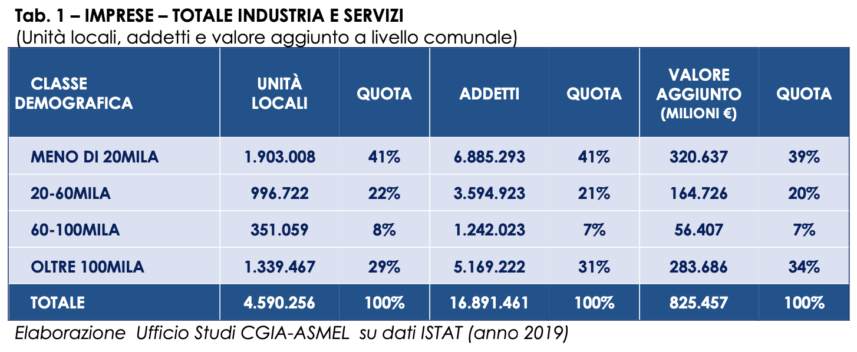
If we separate the total added value produced by private companies into the two branches that make it up, industry and services, the great manufacturing vocation of the Municipalities under 20 inhabitants emerges where 54 per cent of industrial enterprises (514.069) are located, 56 per cent percent of employees (3.029.993) and even 53 percent of GDP (182,8 billion euros).
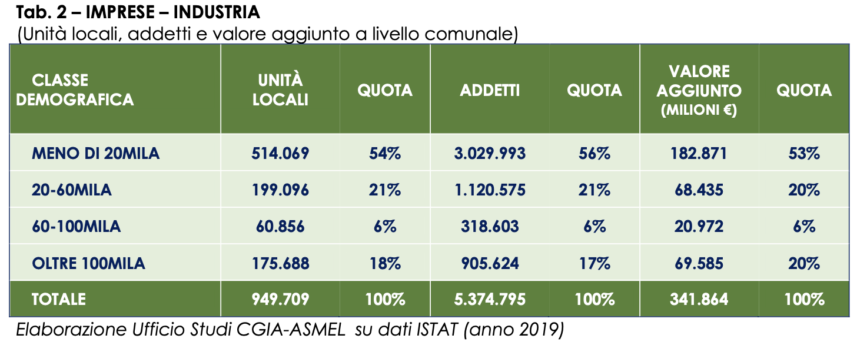
Conversely, as was easily predictable, the service sector (includes trade, transport, communications and tourism) is concentrated especially in large urban areas: in cities with more than 100 inhabitants, in fact, we see the 32 per cent of the local units in this sector, 37 per cent of the employees and 44 per cent of the added value. Small municipalities with fewer than 20 inhabitants, however, also play a very marginal role in services, accounting for 38 percent of businesses (1.388.939 units), 33 percent of employees (3.846.275 employees) and 28 per cent of the added value (137,5 billion euros).
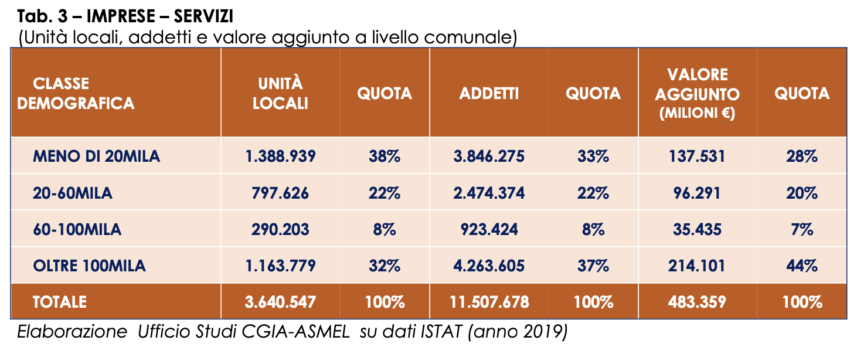
If we analyze the distribution of the local units of industrial and service enterprises at regional level, only in Emilia Romagna, Liguria and Lazio the percentage incidence on the total of those located in municipalities with more than 100 thousand inhabitants is higher than that relating to established enterprises. in administrations with fewer than 20 inhabitants.
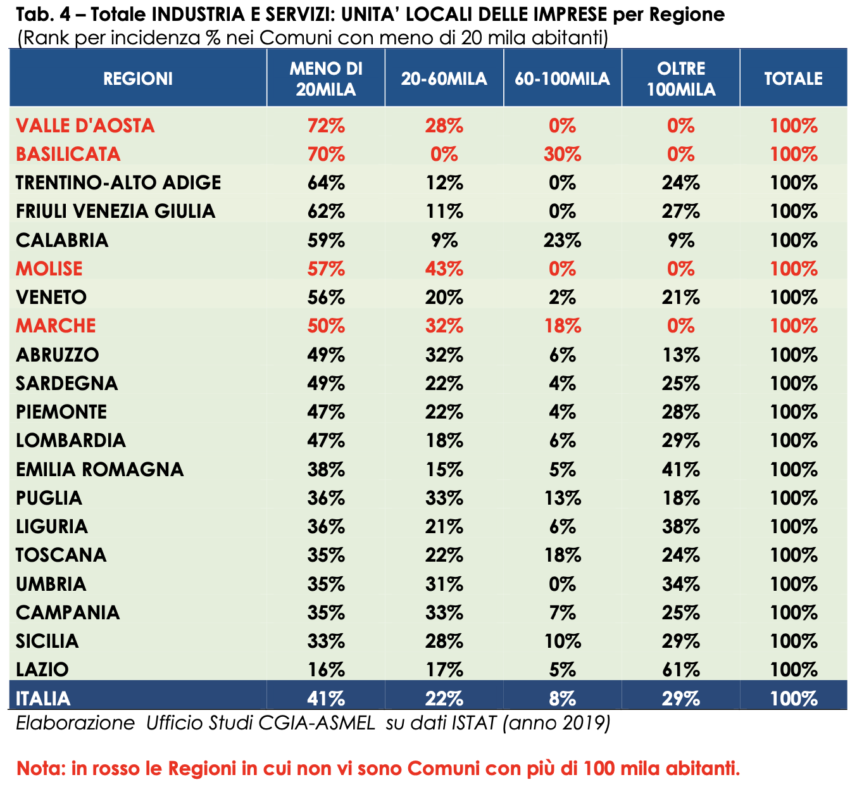
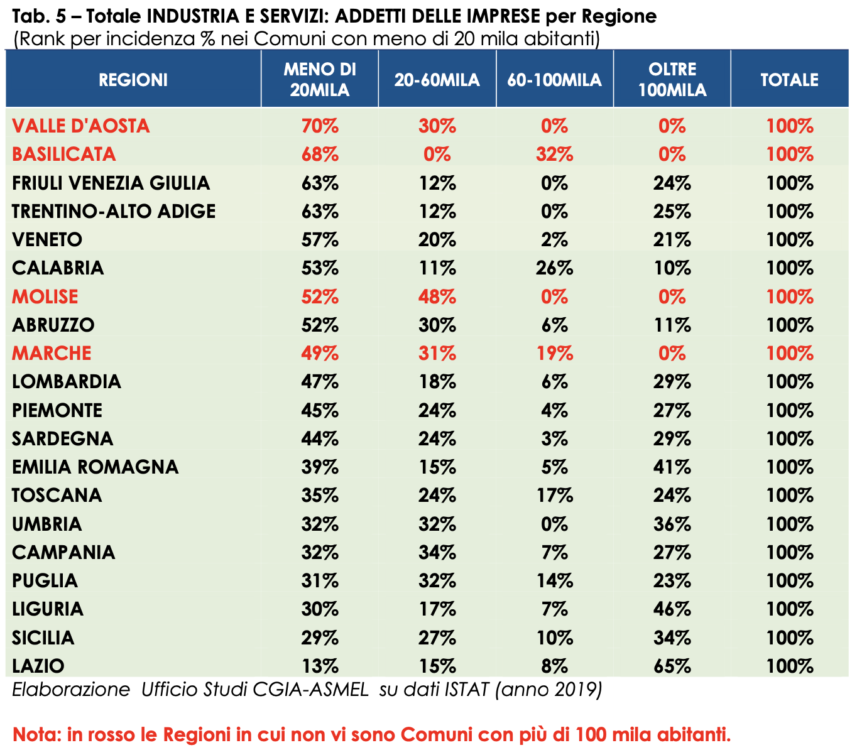
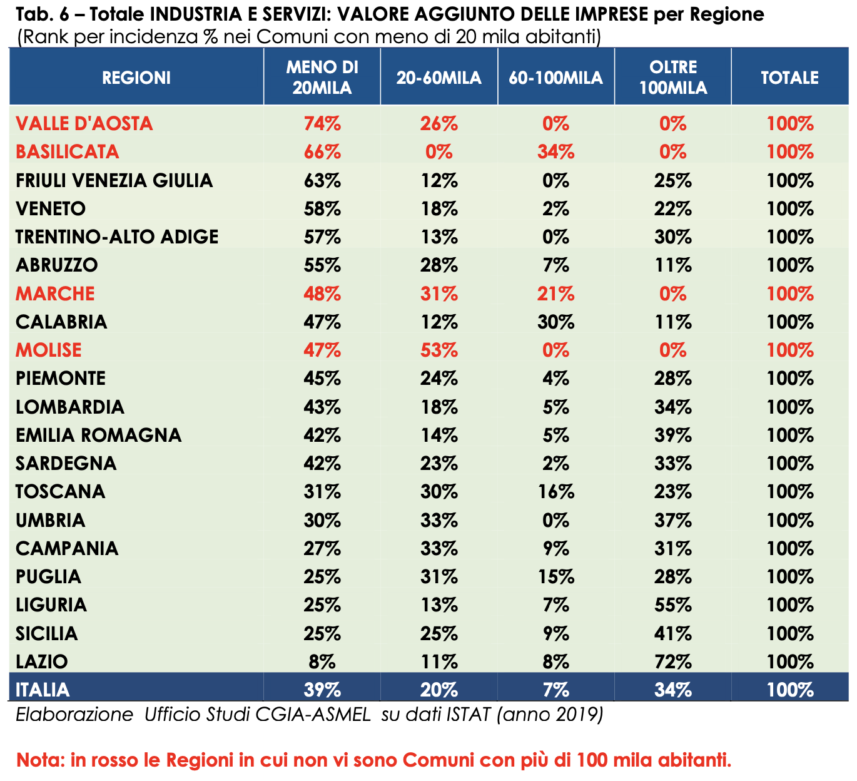
For Liguria and Lazio, in particular, this result is attributable to the demographic "weight" that the municipalities of Genoa and Rome have towards their regions.
